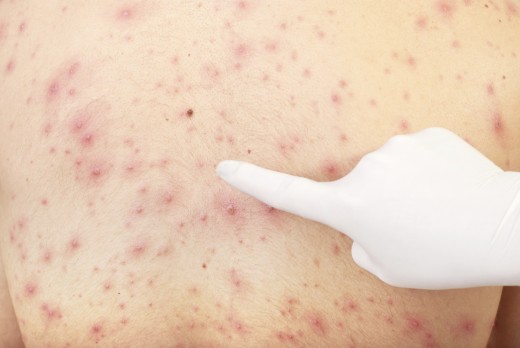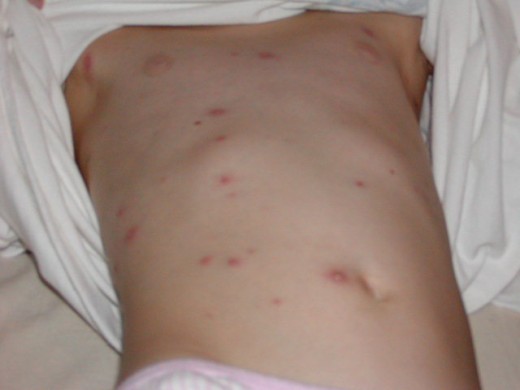- HubPages»
- Health»
- Diseases, Disorders & Conditions»
- Skin Diseases & Conditions
ChickenPox: Clinical Significance Of Its Complications, Diagnosis, Treatment And Prophylaxis
Chicken Pox Can Develop To Neurological Complications

Complications Of Chicken Pox
- Thrombocytopenia may develop leading to hemorrhage into the vesicles, conjunctiva and intestines
- Staphylococcal infection may supervene leading to bacteremia and delayed healing
- Children with impetigo may develop bullous lesions
- Superinfection by hemolytic streptococci causes varicella gangrenosa.
- Around 15% of adults with chickenpox may develop primary varicella pneumonia.
This is manifested 1 to 6 days after the onset of the rash. This may be asymptomatic or it may present with high fever, tachypnea, cough, pleuritic chest pain, cyanosis and hemoptysis. Physical examination may not give evidence of extensive consolidation. It may show only a few rhonchi, scattered rales or rarely pleural effusion. Radiologically extensive nodular lesions are seen in both lungs. As the rashes subside and general condition improves and the pulmonary lesions clear up.
Neurological complications may develop more frequently in children. These include transient cerebellar ataxia encephalomyelitis, polyneuritis, ascending paralysis, transverse myelitis and optic neuritis. Other systemic complications that may develop rarely are myocarditis, Keratitis, iritis, nephritis, arthritis, purpura, orchitis and appendicitis. Quiescent tuberculosis may be reactivated. Chickenpox occurring in early pregnancy may give rise to congenital malformations. If the mother develops the rash between four days prior to delivery and two days thereafter, it is highly probable that the new born is infected. The disease is associated with high mortality in the neonate.
Diagnosis: Clinical diagnosis is not difficult in typical cases. Fever with vesicular rash occurring on the trunk and milder prodromata is suggestive of chickenpox. Smallpox used to be an important differential diagnosis. Though smallpox has been eradicated, it is extremely important to identify any similar illness and subject the patient to full investigation.
Laboratory diagnosis: Examination of material scraped from the vesicles reveal intranuclear inclusion bodies within epitherlial cells. Virus can be isolated from vesicular fluid. Serological diagnosis can be made by complement fixation, immunoadherence, hemagglutination or indirect immunofluorescent antibody detection tests.
Prophylaxis: Isolation Of Patient And Heat Sterilization Of Articles Used

Infectious Diseases
Treatment And Prophylaxis Of Chicken Pox
Treatment: In the majority of cases only symptomatic treatment is required, when the illness is mild. Paracetamol in a dose of 0.5g given thrice daily serves to relieve pain. To prevent secondary infection, local antiseptics like chlorhexidine can be used. Pruritus can be reduced by local application of peanut oil containing 1% phenol. Antiviral drugs such as acyclovir or vidarabine are being tried in complicated cases.
Prophylaxis: Spread of infection can be prevented by isolation of the patient and heat sterilization of contaminated articles. Immunosuppressed children who are exposed to chickenpox should be given protective immunoglobulin. Serum obtained from persons who have suffered from varicella and herpes zoster contains protective antibodies. When given in doses of 3 to 6 ml/Kg body weight within six days of exposure, this is given temporary protection. Varicella zoster immune globulin prepared from pooled human plasma contains antibodies against varicella. And when given in a dose of 0.5 to 1 ml/Kg body weight within 72 hours of exposure it given passive immunity. Secondary bacterial infection should be treated with antibacterial agents.
Live attenuated varicella zoster virus vaccines are being tried as immunizing agents in high risk children. They are not available for regular used.
© 2014 Funom Theophilus Makama









